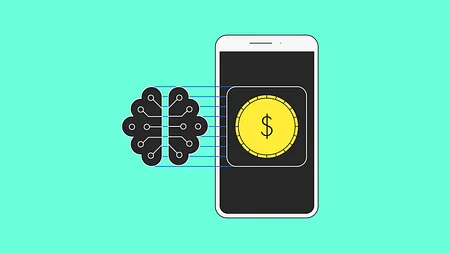Don't get lost, renew your roadmap

At some point for every product, you’ll have gone through an initial period of exciting discovery.
This is taken from our Unfiltered newsletter. Subscribe now for a no BS, uncensored analysis of fintech news and hot topics delivered to your inbox each fortnight.
The product vision - knowing your customers, their goals, how your product solves their problems and how you will build the right product for them - will have been defined. You may have been able to launch your product and have it in market, with real live users and (even!) making some (gasp!) money! But at some stage, success brings you to the same juncture: you need to renew your roadmap. You need to take the next step in your product’s maturity. And it’s hard for several reasons:
success brings you to the same juncture: you need to renew your roadmap.
After so long with it, you fall in love with your solution - After diligently studying users, the market and building a product for them, you end up too attached to your product
Although there’s been some success, it’s not working out quite as it should - This could be for a number of reasons: poor product market fit, execution issues, messaging, etc.
You’ve run out of steam - It’s an unfortunate fact that in many companies product development follows a prioritisation and funding cycle that has nothing to do with where a product actually is. You can run out of money, political will or priority from the company just when you need it most
But renewal is vital, so here’s what to do.
You need to refresh your route
In the Greenfield days of your product, you didn’t know all the bumps that would pop up along the way. But you set a direction and came up with a product roadmap to help you plot your way to success. The product roadmap is well-named, so let’s think back to the way maps were traditionally used.
Technologies like Satnav and mapping software have pretty much changed our wayfinding and directional skills for good but back in the day, you didn’t expect a map to give you turn-by-turn navigation from your doorstep. It was a top-down, visual process. You looked for where you were, where you were going and found a route to connect those dots. Sometimes this was straightforward, sometimes it was terribly frustrating. But the aggregate effect was that you would have a picture in your head about the destination, key waypoints and overall shape of the route. And that’s pretty much the same with product roadmaps. So why change that?
Black turtlenecks and moonshots
I’m writing about this for a couple of reasons. Firstly, because for Pulse, the product I work on here at 11:FS, we’re going through this process right now. And secondly, I have encountered this time and again throughout my career. Products reach a ‘certain age’ and need a refresh for their next stage of growth but this process is often contentious or slow.
The idea of starting from nothing and building huge success is incredibly attractive, and one that’s dominated product management literature since the beginning. There are real geniuses and innovations out there, so we start to think that ‘good’ only looks like that. In reality, most products go through many iterations before they are fully mature. Think of famous products like Netflix or the iPhone. Each stage of their roadmap has required adjustment, sometimes lots, to reach the next level.
Many of these products centred around a visionary pivot which, in hindsight, we say was ‘obvious’. But on the ground, when these directional changes were being evaluated, they weren’t obvious choices. Big changes like these carry big risks, and demand you revalidate your route, destination, even the way you’re travelling. It’s tough, but a must.
My unfiltered opinion
To refresh a roadmap, you need to balance what you have (the live product you have already built) vs. what you could have (something new/exciting/different to what that product is). Start by validating your assumptions for your existing product and its roadmap. This means challenging and refreshing your high-level and low-level goals, and determining if you need to make a change of route or even a pivot to a different destination.
Bringing back our map analogy, this is like reassessing once you’re on the road and can see what traffic, diversions, construction, etc. might be on the way. Or maybe you just want to stop for lunch at that lovely place you read about. Here’s how to do it:
Put everything on the table - Nothing should be above consideration, but also make sure you count the knowledge you and the team have amassed so far
Test assumptions against what you already know about your customers and the market - Make sure you’ve assembled your data and done user research ahead of time
Try to look at it with fresh eyes - Let go of the battle scars and biases that previous experience have given you
Think hard about your intended route and play it out. Is this the right place for your product to go? If it doesn’t feel right, and/or isn’t supported by your knowledge and data of the situation, change it.
Keeping disciplined on the journey with your product (with adjustments) will take you the farthest. Fact.
Keeping disciplined on the journey with your product (with adjustments) will take you the farthest. Fact.
If you started over with each major iteration of a product, you’d have so much distance and risk to cover. Despite the twin temptations of either keeping on the same route or scrapping it to do something completely different, learning to boldly refresh your roadmap is the way to do it. Identify how change can level up what you have already achieved and result in big wins. This is how you really get into learning about customers and the market - you figure out how to solve user problems and increase the value of your product.



